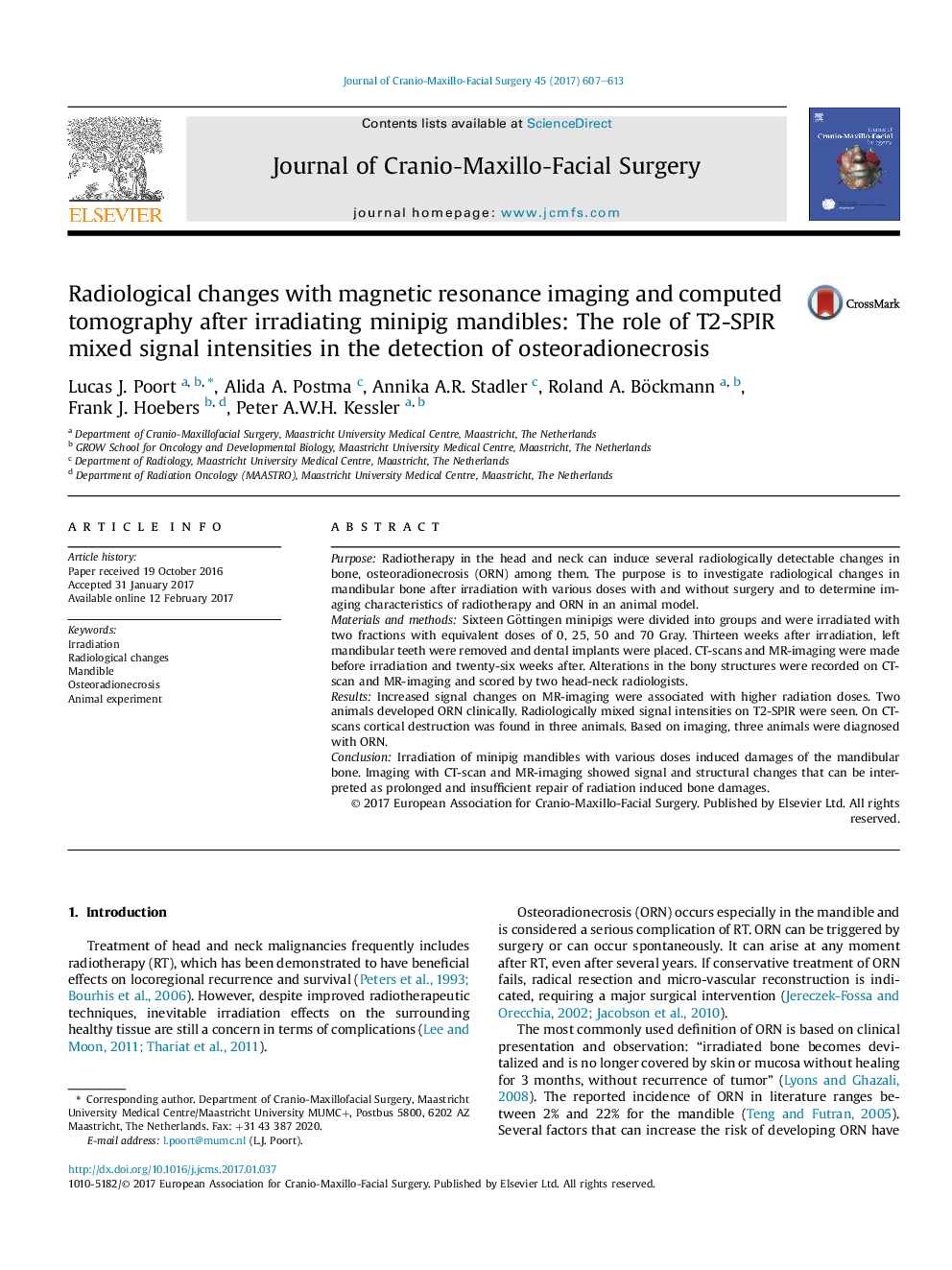| Article ID | Journal | Published Year | Pages | File Type |
|---|---|---|---|---|
| 5640015 | Journal of Cranio-Maxillofacial Surgery | 2017 | 7 Pages |
PurposeRadiotherapy in the head and neck can induce several radiologically detectable changes in bone, osteoradionecrosis (ORN) among them. The purpose is to investigate radiological changes in mandibular bone after irradiation with various doses with and without surgery and to determine imaging characteristics of radiotherapy and ORN in an animal model.Materials and methodsSixteen Göttingen minipigs were divided into groups and were irradiated with two fractions with equivalent doses of 0, 25, 50 and 70 Gray. Thirteen weeks after irradiation, left mandibular teeth were removed and dental implants were placed. CT-scans and MR-imaging were made before irradiation and twenty-six weeks after. Alterations in the bony structures were recorded on CT-scan and MR-imaging and scored by two head-neck radiologists.ResultsIncreased signal changes on MR-imaging were associated with higher radiation doses. Two animals developed ORN clinically. Radiologically mixed signal intensities on T2-SPIR were seen. On CT-scans cortical destruction was found in three animals. Based on imaging, three animals were diagnosed with ORN.ConclusionIrradiation of minipig mandibles with various doses induced damages of the mandibular bone. Imaging with CT-scan and MR-imaging showed signal and structural changes that can be interpreted as prolonged and insufficient repair of radiation induced bone damages.
